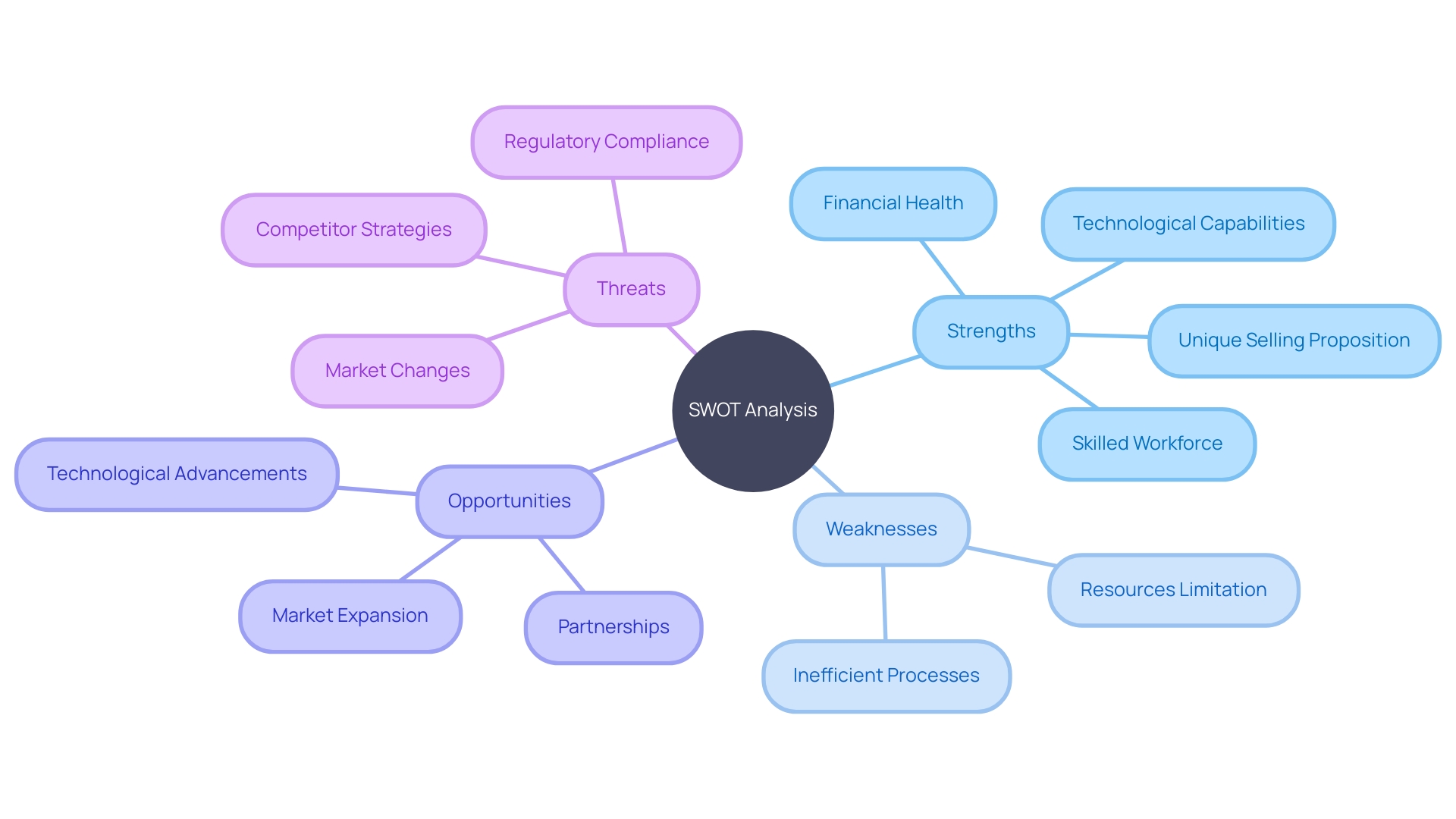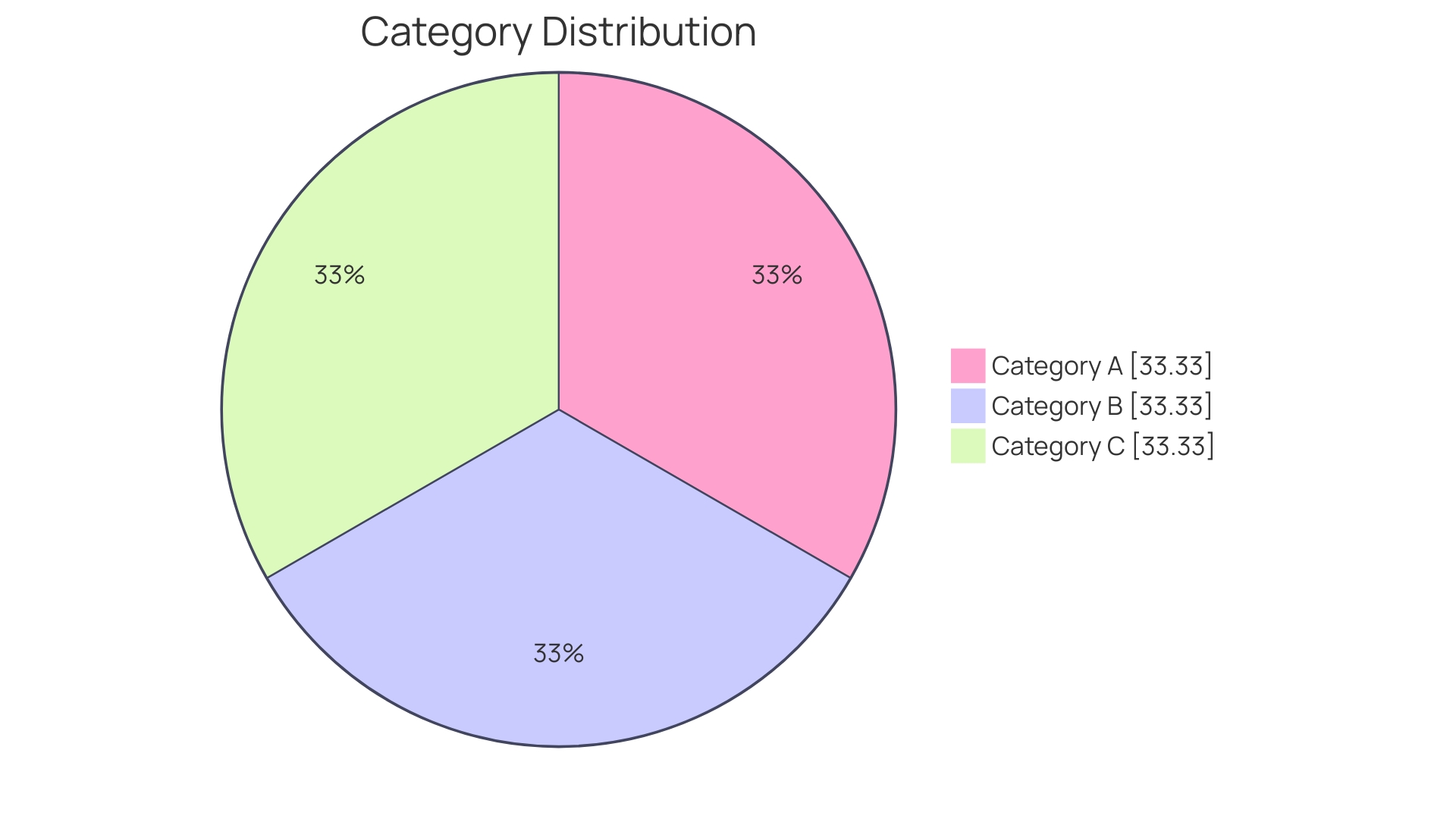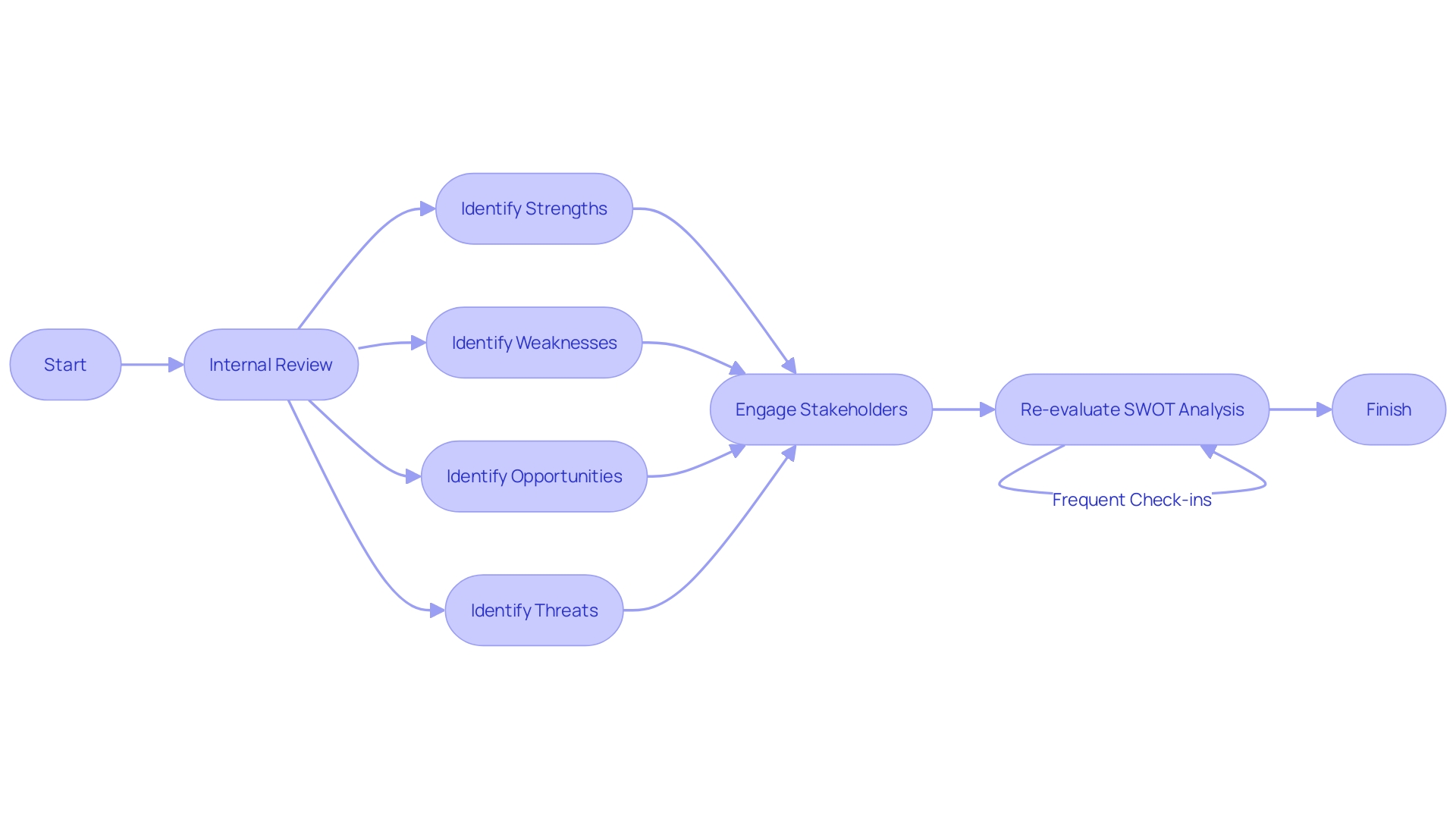Introduction
SWOT Analysis is a powerful tool that allows companies to assess both internal dynamics and external market context, enabling them to identify advantageous elements as well as potential challenges. While the strengths, weaknesses, and opportunities aspects of SWOT are often emphasized, the importance of analyzing threats should not be underestimated. In this article, we will delve into the significance of understanding threats in SWOT Analysis and explore practical examples of threats across various industries.
Furthermore, we will discuss strategies to address these threats and leverage the insights gained from SWOT Analysis to drive growth and sustainability. By effectively evaluating threats and integrating them into the strategic planning cycle, organizations can position themselves to thrive in a dynamic and competitive business environment.
Understanding SWOT Analysis Threats
The strategic significance of SWOT Analysis lies in its capacity to reveal a company's internal dynamics and external market context through identifying both advantageous and challenging elements. A critical component often underemphasized is the 'Threats' aspect, where potential risks such as regulatory shifts and increased competition are examined. These threats, external in nature, require astute anticipation and strategic preparation.
For startups and established entities alike, the SWOT Analysis serves as a panoramic lens, offering clarity on immediate impacts and guiding long-term strategic direction. Executed effectively, it fosters alignment within the organization by involving various departments in collaborative dialogue, nurturing a collective understanding that is essential for resilient strategy formation.
To quickly accumulate and evaluate strategic data, a SWOT matrix distills complex information into an accessible format, empowering decision-makers to discern priorities and devise robust responses. It elevates the ability to craft strategies that play to the organization's strengths while addressing vulnerabilities, positioning companies to proactively engage with their competitive landscape.
Furthermore, a distinct advantage lies in the analysis' foresight, which positions businesses to align internal capabilities with external realities, driving growth and sustainability. Nonetheless, the key to leveraging a SWOT Analysis is not merely compiling it but integrating its insights into the strategic planning cycle, thereby enabling organizations to adapt and thrive amidst market fluctuations and dynamism.
Identifying Threats in SWOT Analysis
The SWOT analysis, an essential strategic planning framework, empowers organizations to pinpoint both beneficial and challenging elements influencing their performance. Specifically, identifying threats - external factors with potential negative impacts - is vital for crafting robust strategies to mitigate risks. To navigate these external uncertainties, one can begin by employing a series of meticulous techniques that facilitate a comprehensive exploration of potential hazards.
This methodical approach opens the door to a wealth of information that, when skillfully analyzed and interpreted, enables organizations to fortify their position against potential threats. A deep dive into this process offers insightful, actionable intelligence, ensuring that the analysis transcends mere theoretical discourse and evolves into a strategic cornerstone. Leveraging such actionable insights, businesses are equipped to craft strategies that not only manage weaknesses but also leverage strengths effectively, adeptly responding to an ever-changing business environment.
Regularly updated SWOT assessments offer a strategic edge, setting the stage for businesses to successfully adapt to market shifts and stay ahead of the competition.

Examples of Threats in SWOT Analysis
Understanding potential threats is a crucial step in SWOT analysis, providing foresight to mitigate risks. Various industries encounter common threats which, once recognized, can be strategically addressed. For example, cybersecurity has emerged as an omnipresent threat across sectors.
In 2023 alone, there were 68 cyberattacks with physical repercussions on industrial control systems and operational technology, underscoring the reality that 80% were ransomware incidents, while activism-related cyber disruptions increased to 15%. This elevates the importance of proactive strategies, like employee security training, IT and OT department synergy through job rotations and collaborative workshops, and robust documentation with carefully implemented automation in incident response to reduce unnecessary workload.
In the realm of oil and gas, cybersecurity has ascended to one of the top five business risks, with 60% of professionals emphasizing its priority. Heightened cyber attack prevalence and evolving regulations motivate industry players to safeguard operational technology. The sector is evenly divided in cybersecurity preparedness; just over half report substantial progress in protective measures and monitoring systems, implying that an equivalent proportion potentially lacks sufficient defenses.
Penning down these threats within a SWOT analysis framework encourages the development of well-informed strategies that leverage strengths and tackle vulnerabilities, all while staying responsive to the industry environment. By conducting regular and inclusive SWOT assessments that consider these dominant threats, organizations can preserve a competitive edge even in a landscape that sustains constant change.

How to Address Threats in SWOT Analysis
Empowering your business against potential threats is a critical component of strategic planning. Leveraging a SWOT analysis, which encapsulates your organization's strengths, weaknesses, opportunities, and threats, can guide you in crafting fortified strategies. By tapping into the insights a SWOT analysis provides, you can transform threats into actionable procedures, turning risks into fortuitous chances for growth.
Mitigating threats often starts with an internal review—identifying key strengths such as your company's robust financial health or cutting-edge technology stack. These advantages can shield your business by potentially converting weaknesses into competitive strongholds. Engaging stakeholder perspectives is another tactic that enriches the analytical process, ensuring a comprehensive understanding of external risks.
The adaptability bestowed by frequent SWOT re-evaluation is also beneficial, allowing you to preemptively respond to the evolving business environment. For example, global events or technological breakthroughs could alter the competitive landscape, much like how disruptive energy solutions from space-based power transmission technologies have redefined access to sustainable energy. Anticipating such shifts empowers you to deploy strategic countermeasures promptly, maintaining your competitive edge.
Ultimately, it's the synergy of internal strength utilization and keen external threat monitoring that ensures your business not only endures but thrives against challenges. Harnessing the full spectrum of SWOT analysis equips you with the foresight and flexibility to navigate any storm and unlock opportunities for prosperity.

Practical Examples of Threats in Marketing SWOT Analysis
SWOT analysis, serving as an indispensable strategic planning tool, empowers businesses to dissect and steer through the multifaceted landscape of market dynamics. Particularly in the realm of marketing strategies and campaigns, the 'Threats' component of SWOT—referring to external factors that could potentially derail your objectives—is critical to scrutinize for sustaining growth. By delving into historical examples, such as the plight of the Holy Roman Empire grappling with the adverse effects of consanguinity, we can draw parallels to modern challenges in marketing like technological shifts that amplify the surface for data breaches and cyber threats.
Coupled with a rigorous assessment of strengths, weaknesses, and opportunities, identifying and addressing such external threats allows a business to bolster its strategies and thrive amidst fluctuating market conditions. Engaging in continuous SWOT analysis not only clarifies your current position within the industry but also informs strategic decision-making, enabling your organization to remain agile and competitive.
Conclusion
In conclusion, understanding and analyzing threats in SWOT analysis is vital for developing robust strategies that mitigate risks and capitalize on opportunities. By evaluating threats, businesses gain valuable insights into external factors that may impact their performance. Regularly updating SWOT assessments allows organizations to stay ahead of market shifts and proactively address potential threats.
To address threats effectively, organizations should leverage the insights gained from SWOT analysis to transform risks into growth opportunities. This involves leveraging strengths, engaging stakeholders, and adapting to the evolving business environment. By harnessing the full potential of SWOT analysis, businesses can navigate challenges and ensure long-term success.
In marketing, analyzing threats in SWOT analysis is crucial for sustaining growth. By identifying external factors that could potentially derail marketing objectives, businesses can bolster their strategies and thrive amidst fluctuating market conditions.
In summary, integrating threats into SWOT analysis and integrating the insights gained into strategic planning is essential for organizations to thrive in a dynamic and competitive business environment. The key to success lies in being proactive, adaptive, and utilizing the full potential of SWOT analysis to drive growth and sustainability. By continuously evaluating threats and leveraging the power of SWOT analysis, businesses can position themselves for success and remain resilient in the face of uncertainty.




